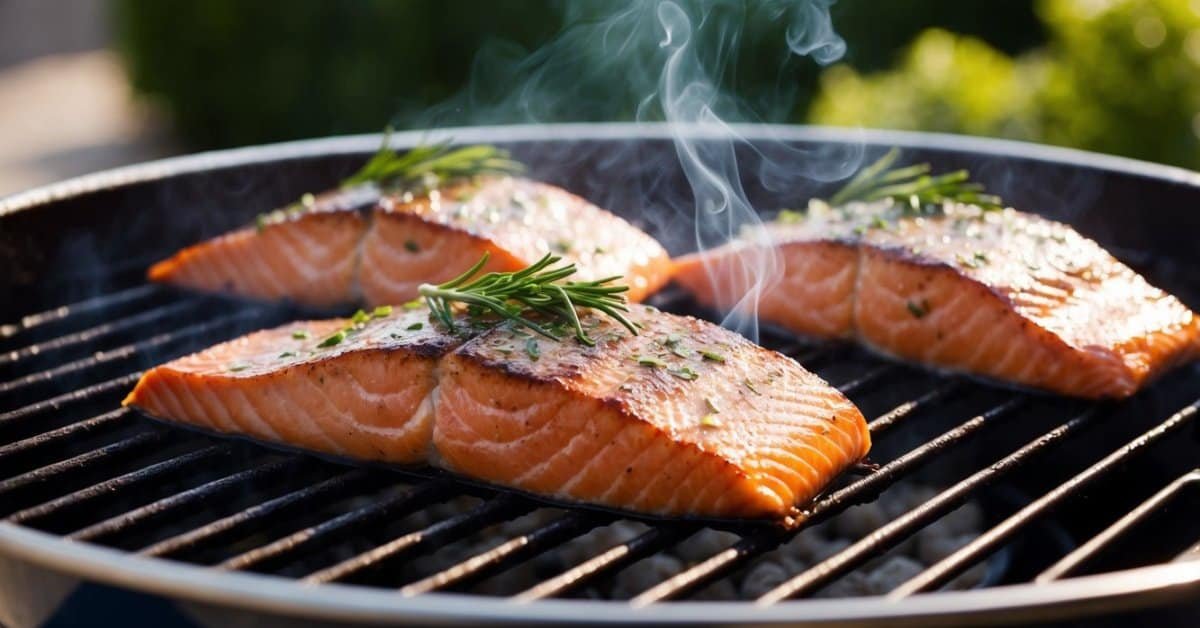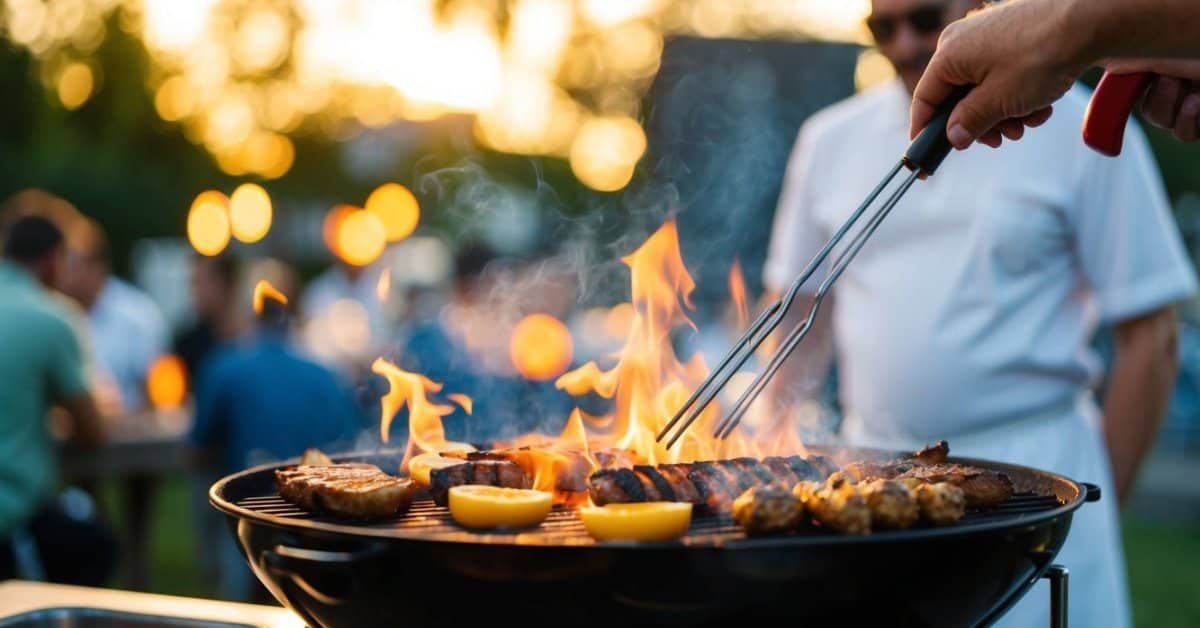Grilling shrimp skewers has always been one of my favorite ways to enjoy the outdoors. There’s something irresistible about the smoky aroma and the perfect char that makes each bite unforgettable. However, I’ve learned that getting shrimp just right takes a bit of know-how to avoid those all-too-common burnt bits.

Over time, I’ve discovered a few simple tricks that ensure my shrimp turn out juicy and flavorful every time. From selecting the right shrimp to mastering the grill temperature, these tips have transformed my grilling game. Whether you’re a seasoned pro or just starting out, you’ll find these insights helpful for creating delicious shrimp skewers without the hassle of burning.
Selecting the Right Shrimp
I choose fresh or properly thawed shrimp to ensure the best flavor and texture. Selecting the right type and size guarantees juicy, perfectly grilled skewers.
Fresh vs. Frozen
Fresh shrimp offer a sweet, delicate flavor and firm texture. If I use frozen shrimp, I ensure they are thoroughly thawed in the refrigerator. Properly thawed frozen shrimp maintain their quality and prevent uneven cooking, reducing the risk of burning.
Choosing the Best Size
I select medium to large shrimp for even cooking and optimal texture. Larger shrimp withstand high heat without overcooking. Below is a recommended size chart:
| Size Category | Count per Pound |
|---|---|
| Medium | 31-40 |
| Large | 21-30 |
| Extra Large | 16-20 |
Uniform sizes ensure consistent grilling, preventing some pieces from burning while others remain undercooked.
Preparing Shrimp for Grilling
Proper preparation ensures flavorful and perfectly cooked shrimp skewers. I focus on cleaning and marinating to enhance taste and texture.
Cleaning and Marinating
- Cleaning Shrimp
- Deveining: Remove the digestive tract by making a shallow cut along the back and pulling out the vein with a knife or deveining tool.
- Peeling: For easier handling and even cooking, peel the shrimp, leaving the tails on for presentation if desired.
- Rinsing: Rinse the shrimp under cold water to eliminate any residual shell fragments or impurities.
- Drying: Pat the shrimp dry with paper towels to ensure the marinade adheres properly.
- Marinating Shrimp
- Marinade Duration: Marinate shrimp for 15 to 30 minutes. Over-marinating can make the shrimp mushy.
- Marinade Ingredients: Combine olive oil, lemon juice, minced garlic, and a pinch of salt. Optionally, add herbs like parsley or cilantro.
- Marinating Process: Place the cleaned shrimp in a resealable plastic bag or shallow dish. Pour the marinade over the shrimp, ensuring all pieces are evenly coated. Refrigerate during the marinating period.
Seasoning Options
- Classic Garlic and Lemon
- Ingredients: Minced garlic, lemon zest, olive oil, salt, and pepper.
- Application: Mix ingredients and toss with shrimp before threading onto skewers.
- Spicy Cajun
- Ingredients: Cajun seasoning, paprika, cayenne pepper, garlic powder, and olive oil.
- Application: Coat shrimp evenly with the spice blend for a bold, spicy flavor.
- Herb and Citrus
- Ingredients: Fresh thyme, rosemary, lemon juice, orange juice, and olive oil.
- Application: Combine herbs and citrus juices with oil, then marinate shrimp for a fresh, aromatic taste.
- Asian-Inspired Teriyaki
- Ingredients: Soy sauce, ginger, garlic, honey, and sesame oil.
- Application: Marinate shrimp in the teriyaki mixture for a sweet and savory profile before grilling.
| Seasoning Option | Key Ingredients | Flavor Profile |
|---|---|---|
| Classic Garlic and Lemon | Garlic, lemon zest, olive oil, salt, pepper | Fresh and savory |
| Spicy Cajun | Cajun seasoning, paprika, cayenne, garlic | Bold and spicy |
| Herb and Citrus | Thyme, rosemary, lemon juice, orange juice | Fresh and aromatic |
| Asian-Inspired Teriyaki | Soy sauce, ginger, honey, sesame oil | Sweet and savory |
Skewering Techniques
Proper skewering ensures even cooking and prevents shrimp from falling off. Here’s how to choose and use the right skewers for perfect results.
Choosing Skewers
Selecting the right skewers is crucial for grilling shrimp without burning.
- Metal Skewers: Reusable and conduct heat well. They allow shrimp to cook evenly and don’t require soaking.
- Wooden Skewers: Disposable and inexpensive. Soak them in water for at least 30 minutes before grilling to prevent burning.
- Bamboo Skewers: Similar to wooden skewers but often thinner. Also need soaking to ensure they don’t char on the grill.
| Skewer Type | Reusability | Heat Conduction | Soaking Required |
|---|---|---|---|
| Metal | Yes | High | No |
| Wooden | No | Low | Yes |
| Bamboo | No | Low | Yes |
Choosing between metal and wooden skewers depends on your preference and convenience. Metal skewers offer durability and ease of use, while wooden skewers provide an affordable option for one-time use.
Proper Skewering Methods
Threading shrimp correctly ensures they cook evenly and stay on the skewer.
- Prepare the Skewer: If using wooden or bamboo skewers, soak them for at least 30 minutes. Metal skewers are ready to use.
- Spacing: Leave about 1 inch between each shrimp to allow heat circulation and prevent uneven cooking.
- Threading Order:
- Start by skewering a firm vegetable like a bell pepper or onion to create a base.
- Alternate between shrimp and vegetables for balanced cooking.
- Orientation: Pierce the shrimp near the tail and through the thicker part of the body to secure them firmly.
- Uniform Size: Use shrimp of similar sizes to ensure they cook at the same rate, avoiding some pieces from burning while others remain undercooked.
Following these methods helps maintain the integrity of each shrimp, resulting in juicy, perfectly grilled skewers every time.
Grilling Strategies to Prevent Burning
To achieve perfectly grilled shrimp skewers without burning, I implement the following strategies.
Preheating the Grill
Preheating ensures even cooking and prevents sticking. I heat my grill to 400-450°F (204-232°C) for at least 10 minutes before adding the skewers. This temperature range allows for a good sear while minimizing the risk of burning.
Controlling Grill Temperature
Maintaining a consistent temperature is key. I use a grill thermometer to monitor the heat and adjust the vents accordingly. Keeping the grill between 350-400°F (177-204°C) helps avoid flare-ups and ensures the shrimp cook evenly without excessive charring.
Using Indirect Heat
Indirect heat reduces the chance of burning while ensuring thorough cooking. I arrange the coals or burners so the skewers are not directly over the flames. This method allows the shrimp to cook gently, achieving a nice char on the exterior while keeping the inside juicy.
Cooking and Serving
Grilling shrimp skewers to perfection involves precise timing and attention. Proper cooking ensures juicy shrimp with a flavorful char.
Knowing When to Flip
I monitor the shrimp closely, flipping them once they develop a pink color and opaque appearance on one side. This usually takes about 2-3 minutes per side. If the shrimp release easily from the skewer, it’s time to turn them. Avoid frequent flipping to prevent breaking the shrimp.
Achieving Perfect Doneness
To achieve perfect doneness, I ensure the internal temperature reaches 120-130°F (49-54°C). Overcooking causes shrimp to become tough and rubbery. I use a digital meat thermometer for accuracy. Additionally, I remove the skewers from the grill as soon as they are done, allowing residual heat to finish the cooking process without burning.

Conclusion
« Delicious Garlic Butter Sauce for Seafood: Easy Recipes & Perfect Pairings
Ultimate Pellet Grill Troubleshooting Guide: Solve Common Grill Problems Fast »
Grilling shrimp skewers has quickly become one of my favorite ways to enjoy outdoor cooking. There’s something special about perfectly charred shrimp that stays juicy and flavorful. Using the tips I’ve shared makes it easy to achieve great results every time.
I love seeing the colorful presentation and hearing the sizzle as the skewers hit the grill. Whether you’re a seasoned griller or just starting out, these techniques can help you create delicious shrimp skewers without the worry of burning. Give them a try at your next barbecue and enjoy the tasty rewards.
Happy grilling!














